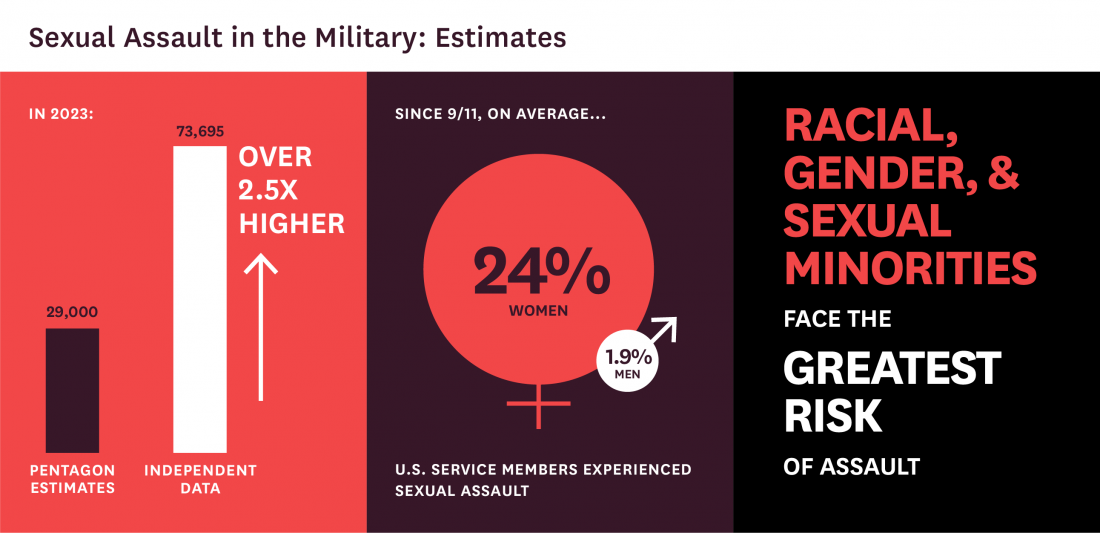Source: Watson Institute International & Public Affairs Brown University
Over the past decade, the U.S. military has implemented policies to promote gender equality, notably lifting the ban on women in combat roles in 2013 and opening all military jobs to women by 2016. Yet, even as U.S. military policy reforms during the “War on Terror” appear to reflect greater equality, violent patterns of abuse and misogyny continued within military workplaces.

This author of this report found that sexual assault prevalence in the military is likely two to four times higher than official government estimations. Based on a comparison of available data collected by the U.S. Department of Defense to independent data, the research estimates there were 75,569 cases of sexual assault in 2021 and 73,695 cases in 2023. On average, over the course of the war in Afghanistan, 24 percent of active-duty women and 1.9 percent of active-duty men experienced sexual assault. The report highlights how experiences of gender inequality are most pronounced for women of color, who experience intersecting forms of racism and sexism and are one of the fastest-growing populations within the military. Independent data also confirm queer and trans service members’ disproportionately greater risk for sexual assault.
The report notes that during the post-9/11 wars, the prioritization of force readiness above all else allowed the problem of sexual assault to fester, papering over internal violence and gender inequalities within military institutions.
